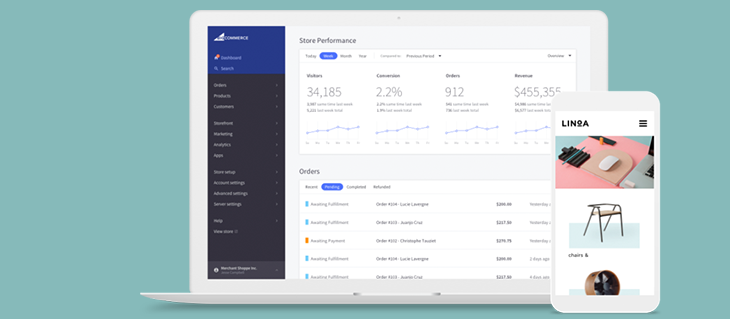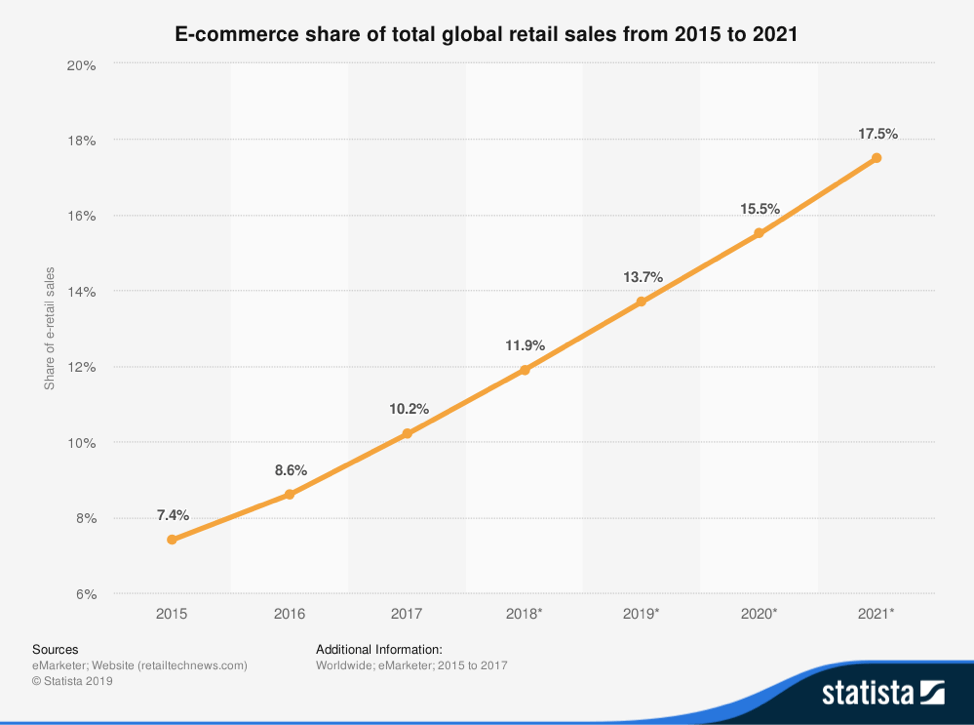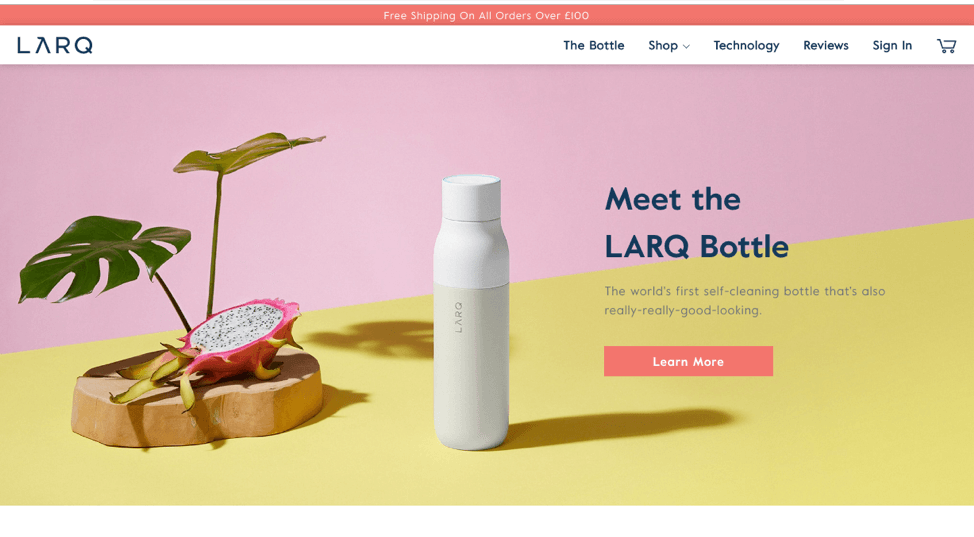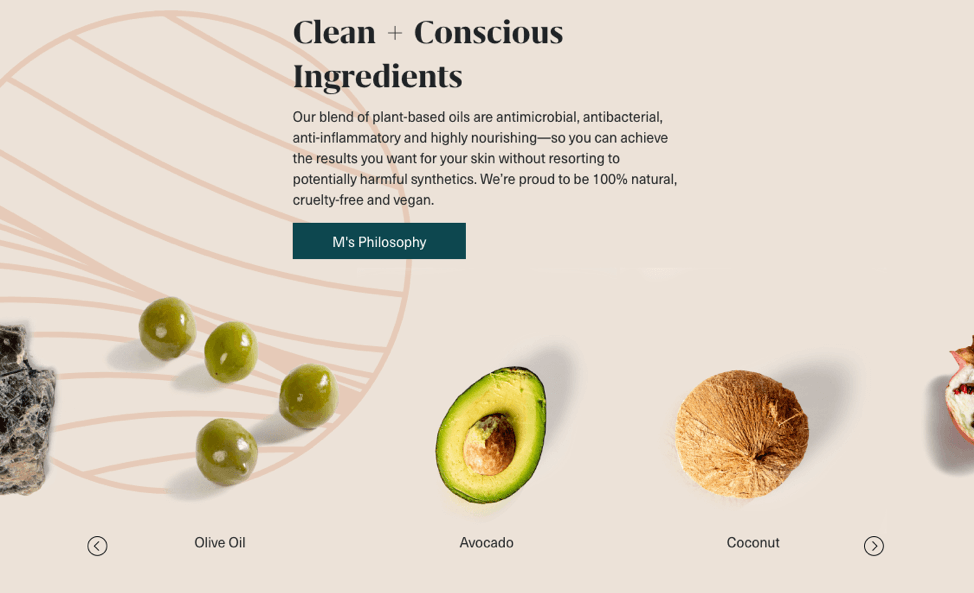The Future of Storefront Design

The eCommerce world is changing the way the world shops and how eCommerce stores are designed
Fueled by mobile, eCommerce sales in North America grew by 16% in 2018 to over $500 billion. Modern technology has drastically changed the way we do many things, and it has most certainly changed the way people shop.

It is estimated that by 2021, the ecommerce share of total global retail will be 17.5%, up from 13.7% in 2019.
But all that growth comes with its own set of challenges for businesses.
Today’s consumer has:
1. Many options of where to shop — both in brick and mortar stores and through online shops.
2. An in-depth knowledge of products through review sites and comparison shopping before they purchase.
In addition, they expect a seamless shopping experience where their needs are anticipated and their expectations met. Customers want to be wowed and they want a unique shopping experience where they are seen and understood by the company.
The modern shopper can shop online using many different devices, at all hours of the day, from anywhere. While this may seem like it opens up opportunities for online retail companies, if the shopper does not get a sense of a personalized and intimate experience, they will move on to the next company.
The customer is more in charge than ever. Because of that, these challenges are driving the future of storefront design.
In order to stand out among other ecommerce businesses, it is important to be bold, creative, and innovative. In this article, we’ll discuss how top brands are designing more innovative storefronts, how headless commerce is making this change possible, and how agencies can help business owners achieve the results they want.
How do brands innovate?
So how does an online retail company not only draw customers in but also offer a unique and personalized experience? By continuing to surprise their customers in fresh and relevant ways.
We’ve listed four strategies brands use to stay ahead of the curve with their storefront design. These brands know that it doesn’t just stop there — innovating is an ongoing process of developing ideas, adding value, and wowing customers.
1. Beautiful storefronts
Adding an extra touch of professionalism and creativity to your ecommerce store design can go a long way in creating a good first impression. A good example of this can be found with WONE leggings. Their storefront uses a minimalist color scheme in a professionally produced video which reflects their value prop: a high-end, minimalist activewear line sold direct-to-consumer in limited runs.
Drawing the customer in with original and creative content is the important first step in the journey.

2. Fun checkout experiences
With the global average rate of shopping cart abandonment at a whopping 75.6%, brands need to consider what they can do to win the customer over.
Interacting with your customer throughout their shopping journey can help your company stand out from others.
As you get to know your customer and engage with them, determine what would improve the experience for them. Strategies such as simplifying the check-out process, sending them a personalized message, or offering a small discount or free shipping as an incentive for them to complete the order can be the difference between a sale and an abandoned cart.
3. Customer journey mapping and retargeting
80% of shoppers are more likely to buy from a company that offers personalized experiences. Gathering information from your customers can be extremely useful to help you anticipate pain points and understand the customer experience through their perspective. This information can be used to retarget customers with specific advertisements across their internet environment.
The bottom line is this: consumers purchase and engage more when they receive a truly personalized shopping experience in a consistent, coordinated fashion.
4. Clever advertising
LARQ is a great example of a company that creatively uses photos with crisp, bright colors as well as quirky videos to drive its advertising. As a company, you need to be able to show off your unique brand and personality (quirks and all) while providing a clear picture of your product.

Engage Customers with Your Ecommerce Storefront
Mariska Nicholson, the creator of Olive + M, had a desire to share her secret of skincare with the world. While concocting recipes in her home, she realized she had something special and unique.
Olive + M’s ethos of ‘what you put on your body is just as important as what you put in your body’ is clearly stated on their website, and shines in their innovative storefront design. What Olive + M has created is bigger than just a business, they’ve created a community of believers.


While some tend to think flashy web design is all that matters, a focus on content that honestly portrays your company and their ethos is just as important, if not more.
Olive + M understands how to connect with people and draw them in a natural and personal way.
The ability to innovate with a content-first storefront requires flexibility in your e-commerce solution. Olive + M achieves this flexibility by using a headless commerce approach.
What is headless commerce?
Headless commerce is the separation of front and backend systems in an ecommerce platform. This allows for greater flexibility for front end development and allows you to customize and personalize your platform for a better user and admin experience. Unlike traditional ecommerce platforms, you can integrate the backend ecommerce functionality like payment and inventory tracking with any content management system you want.
As mentioned above, Olive + M’s headless commerce approach uses WordPress for their CMS with BigCommerce for their backend. Merchants that are using the BigCommerce for WordPress plugin can customize their stores with content-rich customer experiences without treating commerce as an afterthought.
How do agencies help?
More and more companies are hiring agencies to help them digitalize their content, build standout storefronts, and better understand their customers through data collection and analytics. Agencies know the market and the techniques, so you as a business don’t have to. As technology advances, hiring an agency can be a huge benefit for your company because the right agency has the knowledge, insight, and tools to help you be even more successful.
However, don’t rush to hire just any agency. It’s important to understand what you want out of an agency and shop around to understand the difference that each has to offer, and what they can do for your brand. BigCommerce put together this guide featuring Elite-Tier Partners like efelle and their advice on how to choose the best agency for your needs.
Build a unique, future-proof storefront
Taking the time to build a unique experience that is tailored to the needs of your customer is not just a great idea for the future — it is the future. As technology advances, new devices and ways of shopping digitally will develop. Innovation and creativity, while still maintaining your company’s ethos as well as being able to communicate clearly who you are, is key in this digital era.

About BigCommerce
BigCommerce is the world’s leading cloud-based ecommerce platform for fast-growing and established brands. Combining enterprise functionality, an open architecture, and rich app ecosystem, BigCommerce enables businesses to grow online sales with 80% less cost, time and complexity than on-premise software.

About the Author: Corinne Watson
Corinne is a writer and researcher at BigCommerce, where she works directly with agency and technology partners to bring their tools, services and ideas to the commerce industry at large with educational content. When she’s not working, she’s creating and designing for fun online.